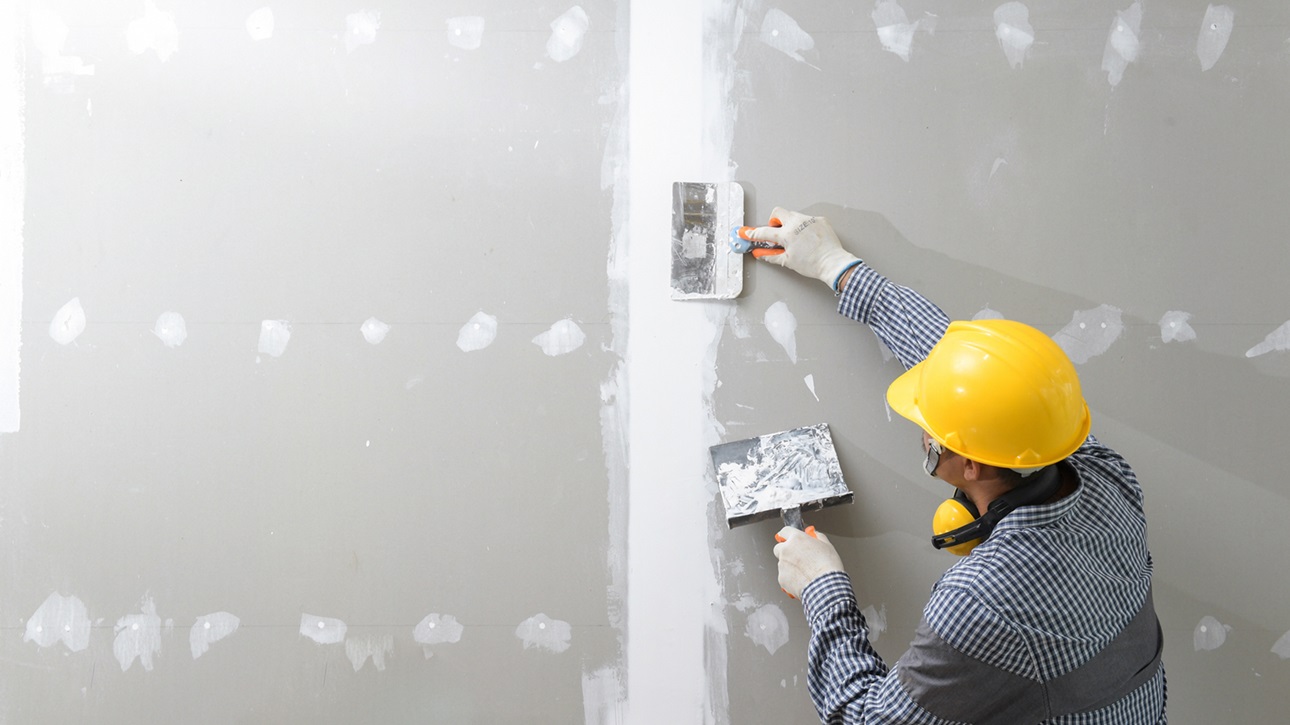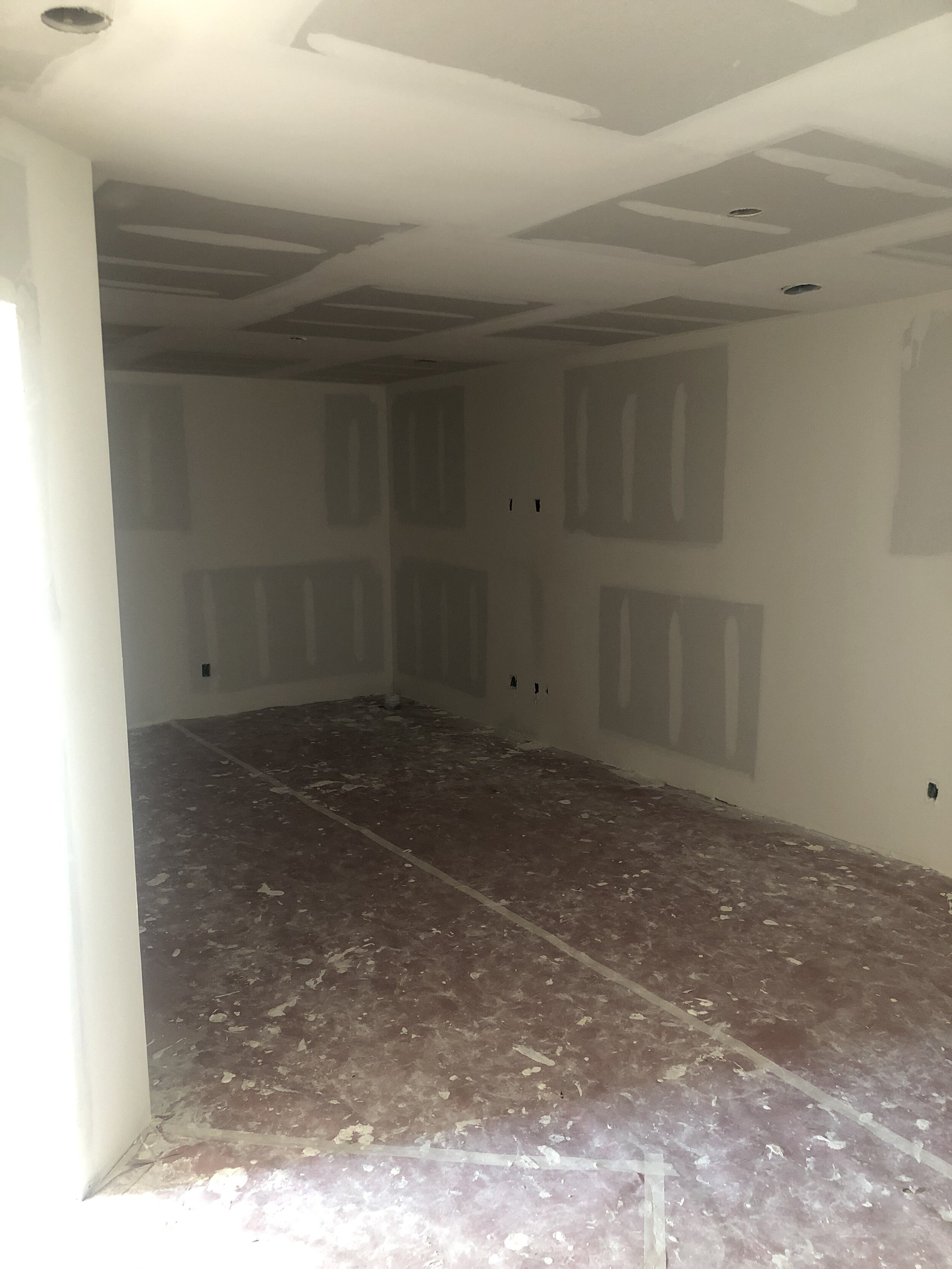Common Mistakes to Avoid in Drywall Repair Projects
Wiki Article
Whatever You Required to Know Concerning Drywall Installment: A Comprehensive Overview

Comprehending Drywall Fundamentals
Recognizing the principles of drywall is necessary for any successful installation task. Drywall, additionally called gypsum board or plasterboard, is a popular building and construction material utilized to develop interior wall surfaces and ceilings. It consists of a gypsum core sandwiched in between two layers of paper. The gypsum core gives the necessary toughness and rigidness, while the paper layers shield the core from damage and offer a smooth surface for finishing.
The most usual types include routine drywall, moisture-resistant drywall, and fireproof drywall. Normal drywall is suitable for most indoor applications, while moisture-resistant drywall is advised for locations with high humidity, such as cooking areas and shower rooms.
An additional secret element of drywall essentials is understanding the standard sizes and thicknesses available. One of the most usual dimensions are 4x8 feet and 4x12 feet, with densities ranging from 1/4 inch to 5/8 inch. Thicker drywall is generally used for applications that call for boosted fire resistance or soundproofing.
Tools and Products Needed for Drywall Installation
To efficiently install drywall, it is important to have the necessary devices and products accessible (drywall contractors). These materials and devices are crucial for accomplishing a specialist coating and guaranteeing the toughness of the installmentMost importantly, you will certainly need a determining tape to properly gauge the measurements of the location where the drywall will certainly be set up. An utility blade is vital for cutting the drywall to the called for shapes and size. Furthermore, a drywall saw can be used for making extra elaborate cuts, such as around windows or electrical outlets.
Following, you will need a screw gun or a drill with a screwdriver bit to protect the drywall to the wall surface studs. Screws, especially drywall screws, are needed for affixing the drywall to the studs. It is vital to use the ideal size of screws to ensure a flush and safe installation.

In regards to materials, you will need the drywall itself, joint compound for filling in joints and spaces, and tape for strengthening the joints. Sandpaper or a fining sand block will certainly be required for smoothing out the joint substance after it has dried.
Preparing the Space for Drywall Setup
Prior to waging the drywall setup, it is necessary to effectively prepare the space to make sure a smooth and successful installation process. Preparing the room entails numerous vital steps that require to be adhered to faithfully.To start with, it is vital to get rid of the location of any kind of furniture, components, or various other objects that may obstruct the installment procedure. This will certainly give the installers with sufficient room to work and navigate around. Additionally, it is a good idea to cover the floorings and any remaining products with protective sheets or ground cloth to stop any kind of damages or particles from falling onto them.
Next, it is very important to evaluate the wall surfaces and ceiling for any type of existing damage, such as cracks, openings, or water spots. These problems must be fixed before the installation to guarantee a smooth and even surface for the drywall. Any kind of loosened paint or wallpaper need to additionally be gotten rid of, and the wall surfaces must be completely cleaned up and cleaned.
In addition, electric and pipes fixtures must be turned off and shielded to stop any crashes or damage during the installment process. It is essential to transform off the power supply to the area and remove any kind of electrical cover plates prior to starting the installment.
Lastly, it is advisable to seek advice from an expert or describe regional building regulations to guarantee conformity with security policies and get any type of required permits prior to proceeding with the installment. By appropriately preparing the area, you can ensure a reliable and effective drywall setup process.
Step-by-Step Guide to Hanging Drywall
To make certain a successful drywall installation, it is essential to comply with a step-by-step overview for hanging the drywall (Edmonton drywallers). This process requires precision and interest to informationFirst, collect all the essential tools and materials, consisting of drywall sheets, an energy blade, a drywall saw, a measuring tape, a drill, and screws.
Next, start by gauging the measurements of the wall or ceiling where the drywall will be set up. Transfer these dimensions onto the drywall sheets, noting where cuts require to be made - drywall repair. Utilize a straight side and an energy blade to rack up the drywall along the significant lines, after that break it along the score line
Once the drywall sheets are cut to size, they can be hung on the wall or ceiling. Begin at one edge and place the first sheet vertically against the framing. Usage screws to secure the drywall to the studs, making certain to leave a tiny space in between sheets for development.
Proceed this process, working your means across the wall surface or ceiling. Make certain that each sheet is level and flush with nearby sheets. Make use of a drywall saw to remove any kind of necessary openings for electrical outlets or buttons.
Ending Up Techniques for a Professional Appearance
Since the drywall sheets have been efficiently hung, it is important to utilize ending up techniques that will certainly cause a sleek and professional appearance. Attaining a perfect and smooth coating on drywall calls for mindful attention to detail and using proper tools and techniques. One of the initial steps in the completing process is to fill up the joints and screw imprints with joint substance. This can be done by using a thin layer of substance over the joints making use of a taping blade, and after that installing drywall tape into the substance. When the tape is in area, one more layer of compound need to be used over it, feathering the edges to develop a smooth shift. After the compound has actually dried out, it is important to sand the surface area to remove any kind of flaws and create a smooth finish. A post sander or sanding block can be made use of for this function. Last but not least, the wall surfaces should be topped and painted to finish the finishing procedure. Using top quality paint and using it uniformly with a roller or brush will make certain a resilient and professional coating. By complying with these ending up methods, your drywall installment will have a sleek and professional look.Conclusion
In final thought, comprehending the basics of drywall installment is necessary for a successful project. By utilizing the proper devices and products, preparing the area properly, and complying with a step-by-step overview, one can accomplish a professional-looking coating. Focus to ending up strategies will certainly better boost the overall appearance. With this detailed overview, any individual can confidently deal with a drywall installation project.The most common kinds include routine drywall, moisture-resistant drywall, and fire-resistant drywall. Routine drywall repair drywall is appropriate for a lot of interior applications, while moisture-resistant drywall is suggested for areas with high humidity, such as kitchen areas and shower rooms. Screws, especially drywall screws, are needed for affixing the drywall to the studs. These problems ought to be repaired before the installment to make certain a smooth and also surface area for the drywall. By adhering to these completing techniques, your drywall installation will certainly have a professional and refined appearance.
Report this wiki page